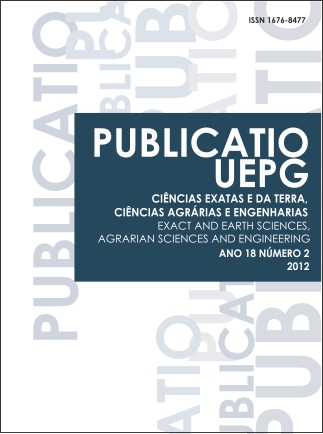Hydrolysis of whey proteins by a Bacillus licheniformis protease
DOI:
https://doi.org/10.5212/publicatio.v18i2.5180Palavras-chave:
Whey, Protein, Enzymatic hydrolysis, Hydrolysis extent, Peptide fractionationResumo
The enzymatic hydrolysis of proteins may contribute for increasing the use of whey. In this work, a B. licheniformis protease was used for this purpose and the hydrolysis extent of a whey protein concentrate (WPC) as well as the size distribution of peptides were evaluated. Four methods were used for determining the hydrolysis extent: formol titration, soluble protein content, OPA (ortophytalaldehyde) and osmometry. The fractionation of peptides was conducted by size-exclusion high performance liquid chromatography. The soluble protein content method produced the highest hydrolysis extent (44.7%) and the formaldehyde method was considered the most suitable for evaluating the hydrolysis extent of WPC proteins. A significant amount of di- and tripeptides (8.79%) was produced. A positive and significant correlation of strong intensity was observed between the methods of formaldehyde with OPA (r = 0.9891; p = 0.0014) and OPA with soluble protein content (r = 0.8974; p = 0.0388). The same type of correlation was observed between the hydrolysis extent obtained by all the methods with the contents of di- and tripeptides (r = from 0.9413 to 0.9485; p = from 0.0115 to 0.0169) and free amino acids (r = from 0.8010 to 0.9197; p = from 0.0031 to 0.0437).


